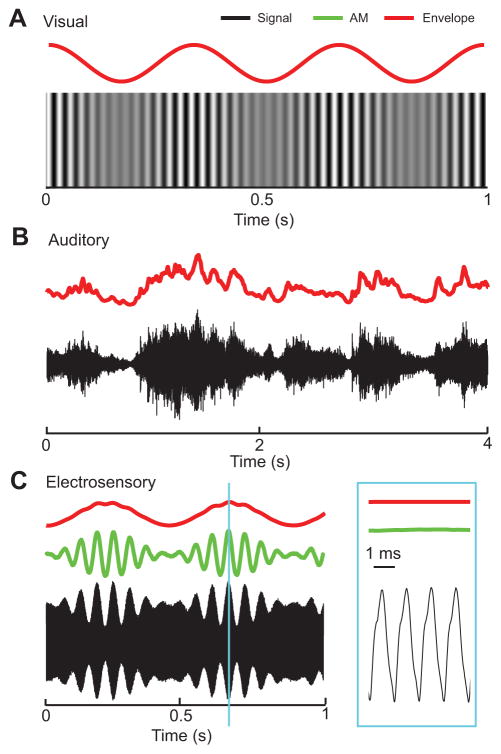Fig. 1.
Envelope stimuli are found ubiquitously in sensory stimuli.
(A) Example of a contrast envelope stimulus in the visual system in which there is a fine-grain pattern (grating of high temporal frequency) whose contrast is modulated by a coarse-grain ‘envelope’ (red). (B) An excerpt from Tchaikovski’s 1812 Overture showing sound pressure (black) and its envelope (red). Note that the envelope corresponds to, in this case, the amplitude modulation (AM) of the pressure stimulus (black). (C) Electric organ discharge (EOD) waveform from Apteronotus leptorhynchus (black) with AM (green) and envelope (red) waveforms. We note that the envelope, for the electrosensory system, corresponds to the depth of modulation of the EOD AM. The inset (right) shows a snippet of all waveforms for a short time indicated by the cyan vertical bar.

